This article was co-authored by Doug Ludemann. Doug Ludemann is the owner and operator of Fish Geeks, LLC, an aquarium services company based in Minneapolis, Minnesota. Doug has worked in the aquarium and fish-care industry for over 20 years, including having worked as a professional aquarist for the Minnesota Zoo and Shedd Aquarium in Chicago. He received his Bachelor of Science in Ecology, Evolution, and Behavior from the University of Minnesota.
There are 7 references cited in this article, which can be found at the bottom of the page.
wikiHow marks an article as reader-approved once it receives enough positive feedback. In this case, 100% of readers who voted found the article helpful, earning it our reader-approved status.
This article has been viewed 420,402 times.
A goldfish aquarium is a wonderful addition to any home. You’ll need to carefully consider how many goldfish you want, since goldfish require lots of room to roam. If you want a single-tailed goldfish or more than one fancy goldfish, you’ll need a larger tank. As long as you put in the effort to build up good bacteria in your tank and establish proper filtration and lighting, you should be able to keep your goldfish healthy and strong.
Steps
Setting up Your Tank
-
1Provide the right amount of space and sunlight for your fish. Select a tank that has at least 24 square inches (154.8 square centimeters) of water for every 1 inch (2.5 cm) of fish. The more space your fish have, the healthier the fish will be. Set your tank on a sturdy stand that can support its weight. Place your stand and tank near a power supply and a water source. Choose an area that gets some natural sunlight but isn't directly in front of a sunny window, as this may cause the tank to heat up.[1]
- If you are not breeding the goldfish, you want to maintain a consistent temperature of 23 Celsius (74 Fahrenheit).
- Because goldfish normally live in a fairly bright, cool lake environment, they need some sunlight during the day and darkness at night. If you use an aquarium light, turn it off at night so that your goldfish can rest.
- A ten-gallon goldfish tank will weigh approximately 100 pounds. A 100-gallon tank weighs about half a ton.
-
2Add three to four inches of gravel to the bottom of the tank. Fill a bucket halfway up with fish-safe aquarium gravel. Run water over the gravel and agitate it with your hands. You should see dirt and sediment rising up from the gravel. Dump out the sediment and rinse it again. When it looks clean, you can add three or four inches to the bottom of the tank.[2]
- If you are using an undergravel filter, you’ll need to install it prior to adding the gravel.
- A recommended gravel size is 1/8’’ (3 mm).
- Goldfish tend to put small gravel in their mouth, so you should avoid smaller gravel sizes.
Advertisement -
3Decorate the tank with rocks and scenery. Pick some colorful rocks to go in your tank, such as slate or red shale. Put the decorative rocks on top of the gravel.[3] Add aquarium plants, hideaways for your fish (such as castles or caves), statues or models like ships or ruins, bridges, driftwood, or rocks to decorate the tank and give your fish various areas to explore.
-
4Install a filtration system with a strong flow rate. Because goldfish produce more waste than other fish, you’ll need a really strong filtration system.[4] You’ll need a very strong flow rate, which is the amount of water filtered per hour. Pick a filtration system that moves at least five and as much as ten times the volume of your tank per hour. Although both internal and external filtration systems will do the trick, you’re more likely to get that kind of flow rate with an external system.[5]
- If you are using a twenty-gallon tank, you’ll need a flow rate of 100-200 gallons per hour.
- If you have a forty-gallon tank, you’ll need a flow rate of 200-400 gallons per hour.
- Undergravel filters are only recommended if you're on a budget or if you're keeping sharpness sensitive goldfish such as the Bubble Eye.
- Canister filters are best for large tanks.
-
5Fill the tank halfway with cold water. Run some clean, cold, dechlorinated water into a bucket. Pour the water into the tank. At this point, you’ll want to make adjustments to the scenery. Try to make sure the fish have some hiding places but also plenty of room to swim around. If you have some plants that need to be secured in the gravel, you could make those adjustments.
-
6Fill the tank all the way up with clean water. Fill a bucket with clean, cold water. Pour it into the tank until the water is close to the top of the tank.[6]
- At this point, you can make any necessary adjustments to the filtration tubes. For instance, if you have an undergravel filter, you’ll want to make sure the lift tubes are halfway in and halfway out of the water.
-
7Turn on the water pump. Before putting the fish in the tank, turn the water pump on your filtration system on and keep it running for several minutes. This will allow the water to cycle through and become circulated. You can also add in a few drops of water conditioner to neutralize the chemicals in the water.
-
8Keep your tank at a temperature of 23 Celsius (74 Fahrenheit). Although goldfish can withstand relatively cool temperatures, you’ll need to keep your tank warm to encourage strong growth and overall health. However, if you plan to breed your goldfish, you’ll need to introduce seasonal variations in water temperature.[7]
- Use either an internal or an external aquarium thermometer to measure temperature.
- If you want to breed your goldfish, keep the temperature at 10 Celsius (50 Fahrenheit) during the winter months. In the spring, raise the temperature to somewhere between 20 Celsius (68 Fahrenheit) and 23 Celsius (74 Fahrenheit) to encourage breeding.
- Don’t let the temperature go above 30 Celsius (86 Fahrenheit). Your goldfish will get stressed out if the temperature gets that high.
- Avoid extreme fluctuations in water temperature.
Building up Good Bacteria
-
1Get a freshwater master test kit and an ammonia test kit. Many species of fish, including goldfish, are sensitive to water chemistry. If the amount of ammonia, nitrate, or nitrite is off, your fish could get sick or even die. Go to a pet supply store or look online for a freshwater master test kit and an ammonia test kit for your fish tank. Once you’ve bought the kits, read over any directions or additional information that come with them.
-
2Add one drop of ammonia per gallon of tank water. Once you have your tank completely setup with everything except the goldfish, you’ll need to build up the good bacteria by adding ammonia. For every gallon of water in your tank, you’ll need to add one drop of ammonia. Every day, add the required number of drops of ammonia into your tank.[8]
- If you have a ten-gallon tank, you’ll be adding ten drops of ammonia.
- You can get bottled ammonia at the pet store.
- You can also add fish food and let it decompose in your aquarium, which will add ammonia to the water.
-
3Test for ammonia and nitrites with your master test kit. After adding ammonia for a few days, you’ll need to start testing the water for nitrites and ammonia.[9] Take two water samples with the syringes included in your master test kit. Shake the solution for testing ammonia and add the number of drops indicated on the side of the bottle. Next, shake the solution for the nitrites and add the number of drops indicated on the side of the bottle. Finally, match the colors in the test tubes to the color chart to determine the concentration of ammonia and nitrite in your tank.[10]
-
4Test the water for nitrates. After a few weeks of adding ammonia, you should be able to start testing for nitrates. Take a water sample with the syringe included in your master test kit. Shake the bottle for nitrates and add the required number of drops to the test tube. Match the color to the color chart to determine nitrate concentration. Also, test for ammonia and nitrites. If the ammonia and nitrite levels go down to zero but there is some nitrate, your tank is successfully cycled and ready for fish![11]
- You’ll still need to add ammonia to feed the good bacteria up until the day you add your goldfish.
-
5Add one fish at a time. You’ll want to change half of your water in order to lower nitrate levels prior to adding your fish. To be safe, you should add one fish at a time. Since the aquarium is a very delicate setup, it is best to see how one fish lives in the tank before adding any more.[12]
- After you add the one goldfish, you should keep testing the water for nitrates, ammonia, and nitrites. You want low levels of ammonia and nitrites, but some nitrates are fine.
- You can add the next goldfish after testing the water for two weeks to make sure the tank is cycling properly and there is sufficient water volume in the tank to handle the additional fish.
Expert Q&A
Did you know you can get expert answers for this article?
Unlock expert answers by supporting wikiHow
-
QuestionWhat's the point of changing the water out?
 Doug LudemannDoug Ludemann is the owner and operator of Fish Geeks, LLC, an aquarium services company based in Minneapolis, Minnesota. Doug has worked in the aquarium and fish-care industry for over 20 years, including having worked as a professional aquarist for the Minnesota Zoo and Shedd Aquarium in Chicago. He received his Bachelor of Science in Ecology, Evolution, and Behavior from the University of Minnesota.
Doug LudemannDoug Ludemann is the owner and operator of Fish Geeks, LLC, an aquarium services company based in Minneapolis, Minnesota. Doug has worked in the aquarium and fish-care industry for over 20 years, including having worked as a professional aquarist for the Minnesota Zoo and Shedd Aquarium in Chicago. He received his Bachelor of Science in Ecology, Evolution, and Behavior from the University of Minnesota.
Professional Aquarist
-
QuestionHow often should I feed by goldfish?
 Doug LudemannDoug Ludemann is the owner and operator of Fish Geeks, LLC, an aquarium services company based in Minneapolis, Minnesota. Doug has worked in the aquarium and fish-care industry for over 20 years, including having worked as a professional aquarist for the Minnesota Zoo and Shedd Aquarium in Chicago. He received his Bachelor of Science in Ecology, Evolution, and Behavior from the University of Minnesota.
Doug LudemannDoug Ludemann is the owner and operator of Fish Geeks, LLC, an aquarium services company based in Minneapolis, Minnesota. Doug has worked in the aquarium and fish-care industry for over 20 years, including having worked as a professional aquarist for the Minnesota Zoo and Shedd Aquarium in Chicago. He received his Bachelor of Science in Ecology, Evolution, and Behavior from the University of Minnesota.
Professional Aquarist
-
QuestionWhat's the best food for a goldfish?
 Doug LudemannDoug Ludemann is the owner and operator of Fish Geeks, LLC, an aquarium services company based in Minneapolis, Minnesota. Doug has worked in the aquarium and fish-care industry for over 20 years, including having worked as a professional aquarist for the Minnesota Zoo and Shedd Aquarium in Chicago. He received his Bachelor of Science in Ecology, Evolution, and Behavior from the University of Minnesota.
Doug LudemannDoug Ludemann is the owner and operator of Fish Geeks, LLC, an aquarium services company based in Minneapolis, Minnesota. Doug has worked in the aquarium and fish-care industry for over 20 years, including having worked as a professional aquarist for the Minnesota Zoo and Shedd Aquarium in Chicago. He received his Bachelor of Science in Ecology, Evolution, and Behavior from the University of Minnesota.
Professional Aquarist
Warnings
- Do not dump water from the fish store into your tank. This water could contain harmful organisms.⧼thumbs_response⧽
- Only use decorations meant for aquariums, and remember to boil rocks before adding them to the tank.⧼thumbs_response⧽
- Avoid placing the aquarium near a radiator, which will make the environment too hot.⧼thumbs_response⧽
- Water and electricity don't mix! Make drip loops with nearby cords so that no water from your tank gets into the socket.⧼thumbs_response⧽
- Goldfish are cold water fish. Don't mix them with tropical fish! If your tank is set up properly for tropical fish, your goldfish will suffer (and vice versa).⧼thumbs_response⧽
Things You’ll Need
- Ammonia
- Ammonia test kit
- Master aquarium water test kit
- Fish tank
- Filter
- Heater
- Bubbler
- Thermometer (only use thermometers meant for fish tanks)
- Gravel
- Water treated with water conditioner
- Food, fishnet and decorations
- Algae scrubber
- Gravel vacuum or siphon
- pH test kit
References
- ↑ https://www.csh.rit.edu/~tonyl/goldfish/testarea/setup.htm
- ↑ Doug Ludemann. Professional Aquarist. Expert Interview. 27 August 2019.
- ↑ https://www.csh.rit.edu/~tonyl/goldfish/testarea/setup.htm
- ↑ https://www.kokosgoldfish.com/tensteps.html
- ↑ http://thegoldfishtank.com/goldfish-care/kit/do-goldfish-need-a-filter/
- ↑ https://www.csh.rit.edu/~tonyl/goldfish/testarea/setup.htm
- ↑ http://thegoldfishtank.com/goldfish-care/tank/goldfish-tank-temperature/
- ↑ http://thegoldfishtank.com/goldfish-care/tank/goldfish-tank-setup-water/
- ↑ http://thegoldfishtank.com/goldfish-care/tank/goldfish-tank-setup-water/
About This Article
To set up a healthy goldfish aquarium, place your tank in an area with some natural sunlight. As you’re setting up the aquarium, choose a filter with a strong flow rate, since goldfish produce more waste than most other fish. Add 3-4 inches of gravel substrate to the bottom of the tank, along with any rocks, plants, or other decorations. In addition, use a thermometer and a heater to keep the temperature of the tank at about 74°F. Regularly test the ammonia, nitrate, and nitrite levels in the water and make adjustments as needed. For tips from our veterinary co-author on how to add your fish to the tank, keep reading!
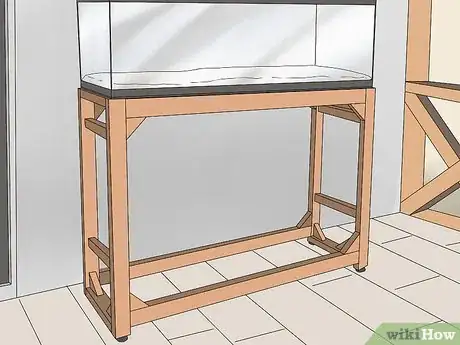
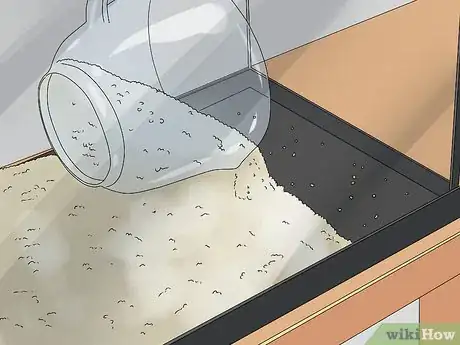

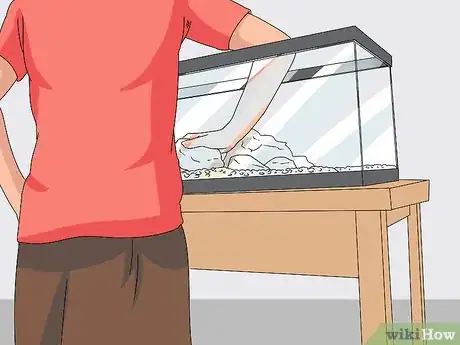
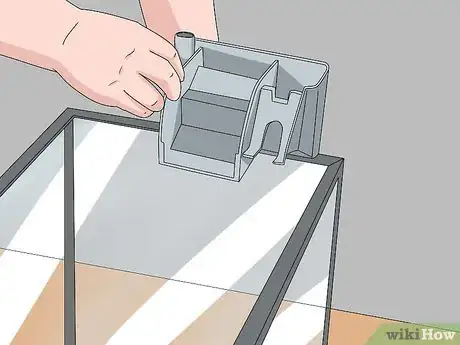
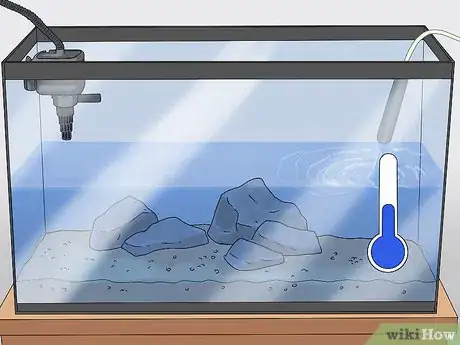
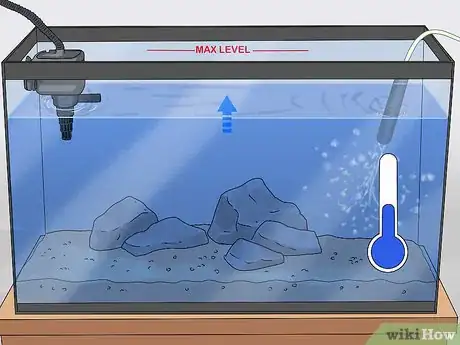
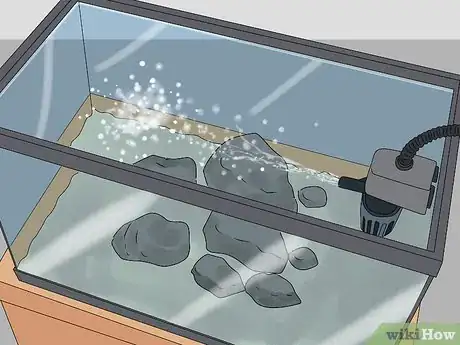

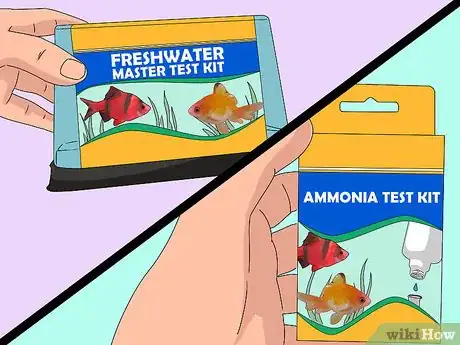
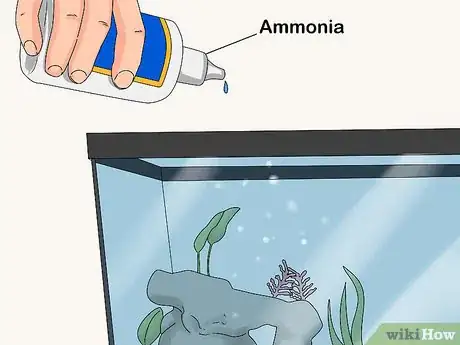
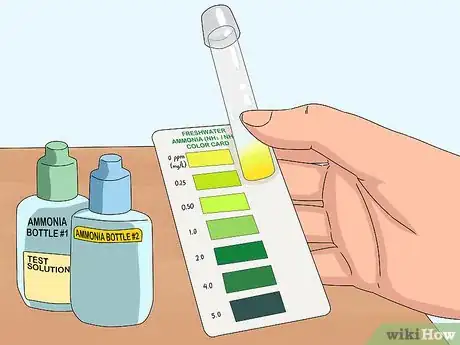

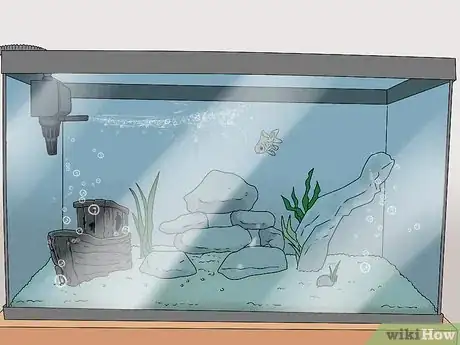
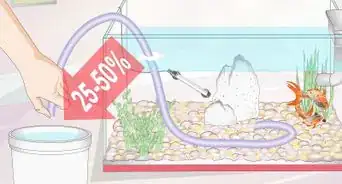
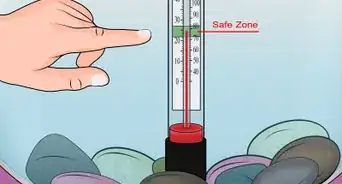
-Step-10-Version-2.webp)



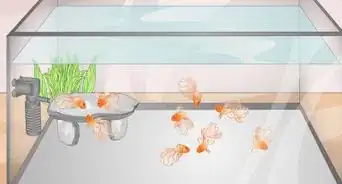
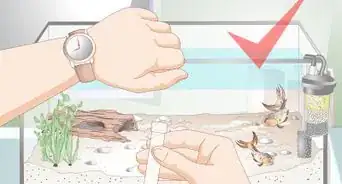




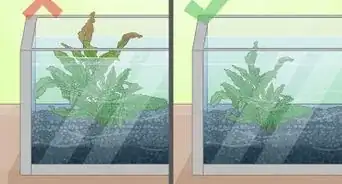










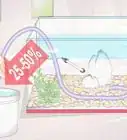

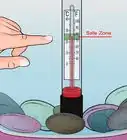
-Step-10-Version-2.webp)


































